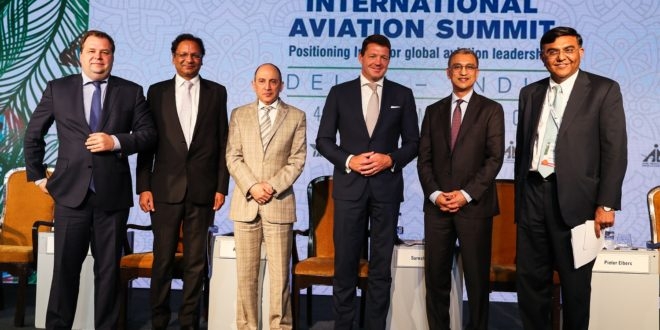IATA has called on the government of India to maximise the potential contribution of aviation to India’s development by addressing infrastructure constraints that limit growth and government policies that impose excessive costs on aviation.
Growth forecasts for India indicate a trebling of passenger demand by 2037 when some 500 million people are expected to fly to, from or within India. Already aviation supports 7.5 million Indian jobs and 30 billion Rupees of GDP (1.5 per cent of the economy).
Global connectivity that only aviation can provide is a critical driver of all modern economies. The financial struggles of India’s airline industry put the stable development of connectivity at risk. And India’s carriers are suffering a “double-whammy” of steeply rising fuel costs and the decline in the value of the Indian Rupee. The rise in fuel costs is particularly acute for Indian carriers for which fuel makes-up 34 per cent of operating costs—well above the global average of 24 per cent.
Alexandre de Juniac, Director General and CEO, IATA said, “While it is easy to find Indian passengers who want to fly, it’s very difficult for airlines to make money in this market. India’s social and economic development needs airlines to be able to profitably accommodate growing demand. We must address infrastructure constraints that limit growth and government policies that deviate from global standards and drive up the cost of connectivity.”
De Juniac’s remarks came in an opening address to the International Aviation Summit in Delhi, co-hosted by the Indian Ministry of Civil Aviation (MoCA), the Airports Authority India (AAI) and IATA. The joint Summit commemorates the approaching milestone of 50-straight months of double digit domestic growth for Indian aviation.
India’s aviation infrastructure has benefitted from significant upgrades in recent years. “It is clear that India has the capacity to develop effective infrastructure. But the job is not done. Passenger numbers will grow. And infrastructure must not be a bottleneck in fulfilling the needs of travellers and the economy,” said de Juniac who called for work in four priority areas:
* Develop a comprehensive and strategic masterplan for India’s airports. “The infrastructure issue is critical for India’s future. Band-Aid solutions will not do the job,” said de Juniac.
* Remove all obstacles to successfully open Navi Mumbai as quickly as possible. Urgent relief is needed for Mumbai’s severe capacity bottleneck.
* Modernise airport processes using technology in line with global standards. The DigiYatra initiative will make a significant step in the right direction with digitally connected airports, passengers, systems and flights. In line with this, IATA encouraged the Indian government to support the broad implementation of IATA’s One ID initiative which uses biometric identification (similar to India’s Aadhar identity card) to save time by eliminating the need for repeated document checks in airports.
* Flexibly use military airspace to expand airspace capacity for civil operations . This was successfully demonstrated with the opening of a conditional airway through restricted airspace over Bhuj and should now be expanded to more areas.
IATA also noted its concerns on government proposals for concession contracts at newly developed greenfield airports.
de Juniac said, “We believe that it makes no sense to fix a per passenger yield at the outset of a concession contract that is set to run for four decades. Flexible parameters should be set that are regularly reviewed by a regulator. And we know from bitter experiences in Brazil, Australia and elsewhere that selecting the company that simply proposes the highest concession fee does not yield good long-term results.”






